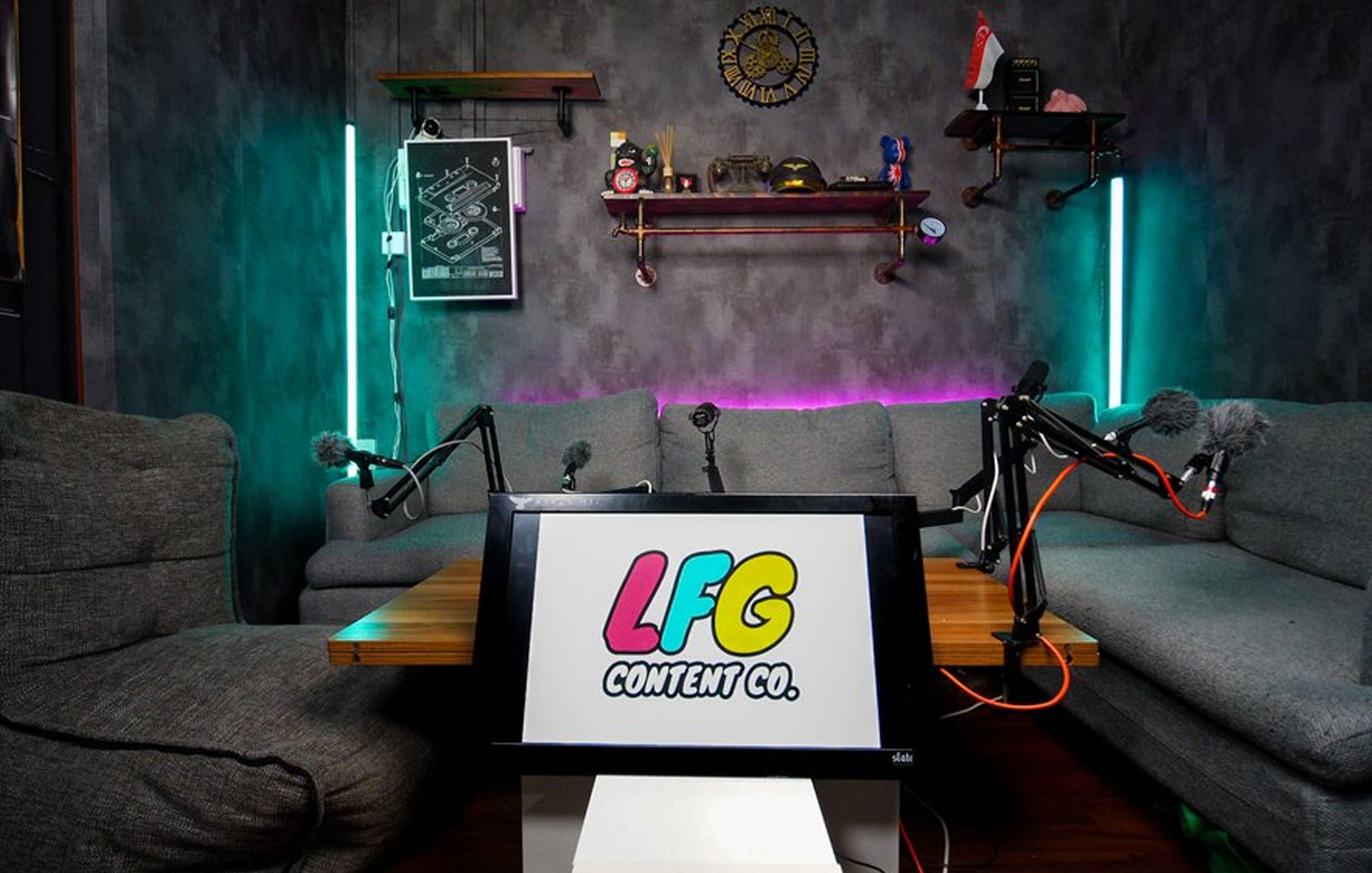How do you Improve Audio Quality in a Well-designed Podcast Studio?
Whether you are an amateur or professional podcaster, you must ensure your podcast has good audio quality. It will help you grow your show and audience. While investing in the right equipment is critical for quality podcast production, you also need to record your shows in a room with good acoustics to prevent reverberation. Hence, you should rent a well-designed and acoustically treated podcast studio in Singapore to create a podcast with great audio quality.
When you speak, sound waves travel from your mouth to the microphone. Additionally, it also travels to other surfaces in the room, reflects off them, and reaches your microphone. As a result, it creates 'reverb' during the recording. It will create multiple reflections of the same sound. These reflections appear almost simultaneously with your voice and, hence, can be difficult to remove during the editing phase. Hence, it is better to prevent them from happening instead of trying to fix the issues during editing.
6 tips to improve the sound quality in your podcast studio
You can prevent reverb by removing reflection points. These are surfaces near your recording spots such as the floor, ceilings, walls, desks, countertops, etc., that reflect your voice to you. As you can't remove all the reflection points, the following tips will not only help remove reverberation but also improve the sound quality in your podcast studio.
Diffusers
They are a critical component of a great podcast studio. Diffusers help scatter sound, reduce echoes, and create a balanced acoustic environment. Podcast studios often use the following methods to include diffusers.
Selecting appropriate diffusers – They might select diffusers targeting specific sound frequency ranges responsible for causing most issues in the studio.
Placement of diffusers – They place diffusers in strategic positions targeting potential reflection points in the studio.
Material of diffusers – They might use different combinations of materials for diffusers to cover a broader frequency range, creating even sound dispersion in the studio.
Installing acoustic panels
A podcast studio may also use acoustic panels to improve audio quality by controlling sound reflections. These panels help absorb sound waves and reduce unwanted reverberation, ensuring clear sound in the recording. A podcast studio can include acoustic panels in the following ways.
Wall panels – Firstly, the podcast studio can place acoustic panels strategically on the walls around the recording area. This can help reduce sound reflections, leading to a controlled acoustic environment.
Ceiling panels – The studio can also install the panels in the ceiling to control sound reflections.
Corner panels –The studio might install panels in the corners to absorb low-frequency sound and improve the overall audio quality of your podcasts.
Install a reflection shield
A podcast studio rental can also install a reflection shield made of sound absorption material surrounding the microphone on three sides. They can help with sound absorption, preventing reverberation.
Use dynamic microphone
A condenser mic picks up not only clear sound, but also other unwanted noise. On the other hand, dynamic microphones are less sensitive to the environment, and hence, using them can help prevent unwanted sounds from being recorded.
Bass Traps
These are an essential part of a podcast studio specially designed to absorb and manage low-frequency sound that might disrupt recordings. They are made of thick and dense materials effective in trapping and damping low-frequency vibrations. Podcast studios often use the following tips to use bass traps to improve sound quality.
Positioning – They may place brass traps in the corner of the rooms, where the walls meet with the ceiling and floors. These are the areas that experience maximum low-frequency build-up.
Customisation – Based on the studio's dimensions, a podcast studio might set customised bass traps to improve absorptions of low-frequency vibrations.
Noise isolation techniques
Another critical aspect of improving the audio quality of your podcast recording is isolating the studio from external noise.
Solid doors and windows – Podcast studios often ensure their rooms are well-insulated and have airtight doors and windows. This will help reduce external sound infiltration.
Seal cracks – They will likely seal the cracks within the walls, floors, and ceilings to maintain a controlled acoustic environment.
Acoustic curtains – Sometimes, the studio might install heavy and sound-absorbing curtains to shield the studio from external noises.
Therefore, by following these tips, a podcast studio can ensure the optimisation of their room acoustics to help podcasters create shows with great sound quality.
LFG Content Co. is a fully customisable, acoustically treated podcast studio for rent in Singapore. Whether you are a creator, business owner, or thought leader, you can rent our studio for podcast production with improved audio quality.

